Designed by Zaha Hadid Architects and Block Research Group, in collaboration with incremental3D and Holcim, a “first of its kind” 3D-concrete-printed bridge has opened to the public in Venice. The unveiling is aligned with the city’s Biennale of Architecture that runs through until November. Titled Striatus, the footbridge is said to establish a new language for concrete that is digital, environmentally advanced and circular by design. It’s held together through compression – with no reinforcements – applying computational design and 3D printing for minimal material use and maximum strength.
“The name Striatus reflects the bridge’s structural logic and fabrication process,” says Philippe Block, co-director of the Block Research Group at ETH Zurich. “In arched and vaulted structures, material is placed such that forces can travel to the supports in pure compression. Strength is created through geometry, using a fraction of the materials used in conventional concrete beams.”
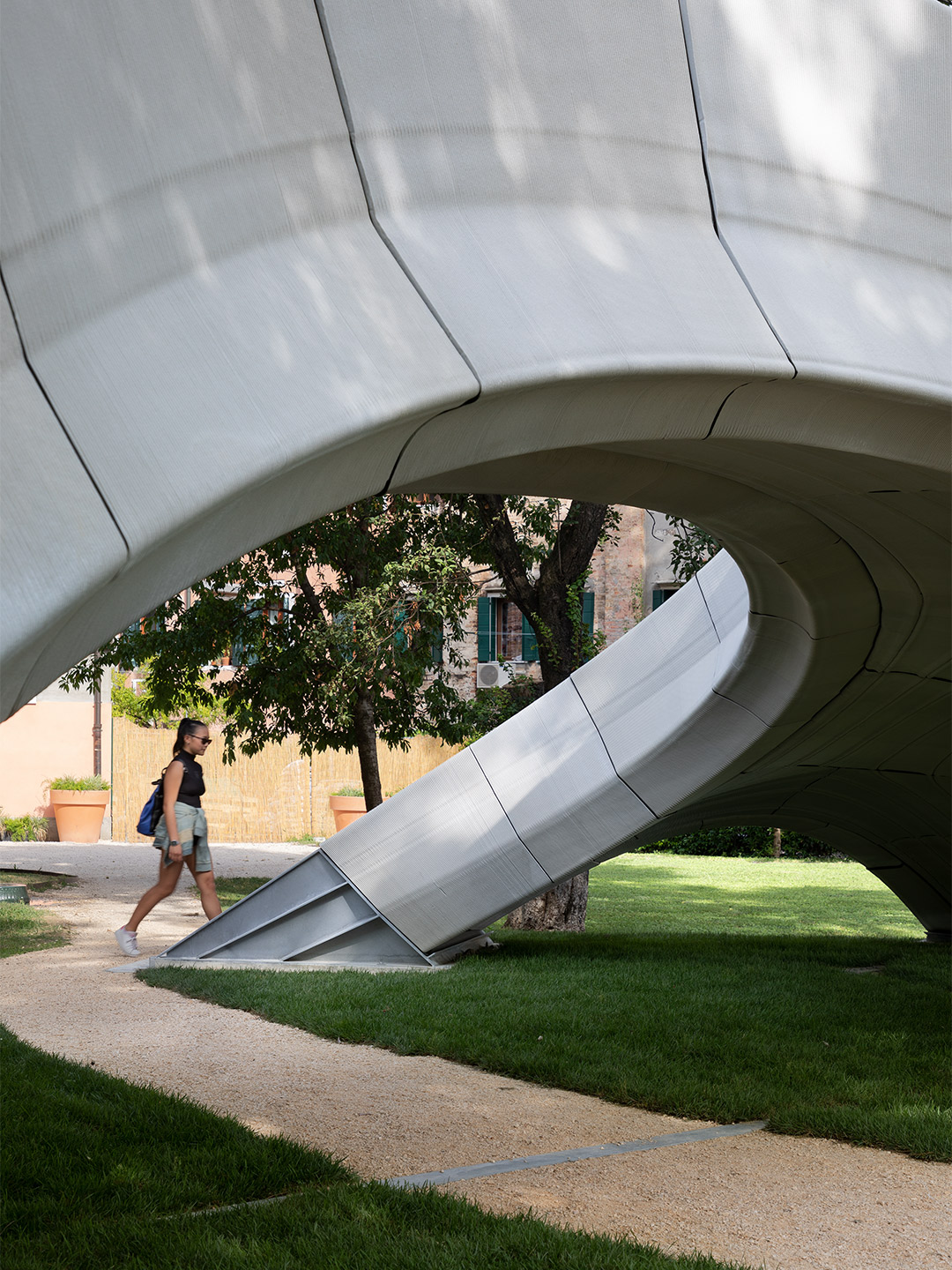
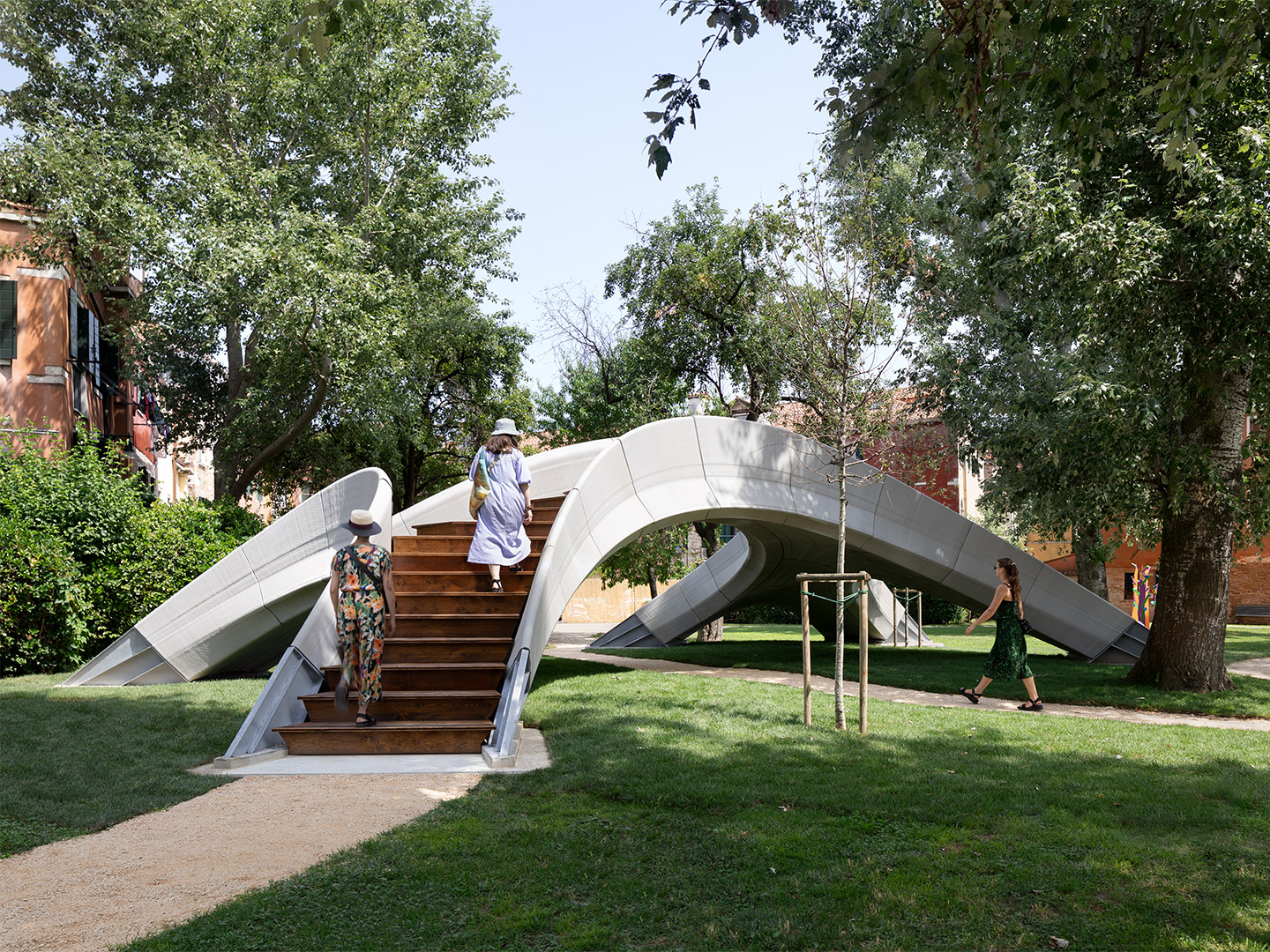
Striatus concrete-printed bridge in Venice / News highlights
- A “first of its kind” 3D-concrete-printed bridge has opened to the public in Venice.
- Titled Striatus, the footbridge was designed by Zaha Hadid Architects and Block Research Group, in collaboration with incremental3D and Holcim.
- It’s held together through compression – with no reinforcements – applying computational design and 3D printing for minimal material use and maximum strength.
- Holcim is working on a range of 3D Concrete Printing applications, from complex infrastructure to affordable housing.
- The unveiling of Striatus is aligned with the city’s Biennale of Architecture that runs through until November.
Striatus is made possible by a specific, custom-made ink, from Holcim’s TectorPrint range, developed by its 3D Concrete Printing research team. It sets a blueprint for the future using advanced technologies; the next generation of inks can include Holcim’s green building solutions, such as ECOPact green concrete, which comprises recycled construction and demolition waste.
“Striatus stands on the shoulders of giants: it revives ancestral techniques of the past, taking the structural logic of the 1600s into the future with digital computation, engineering and robotic manufacturing technologies,” says Shajay Bhooshan, Head of CODE, Zaha Hadid Architects’ Computation and Design research arm.
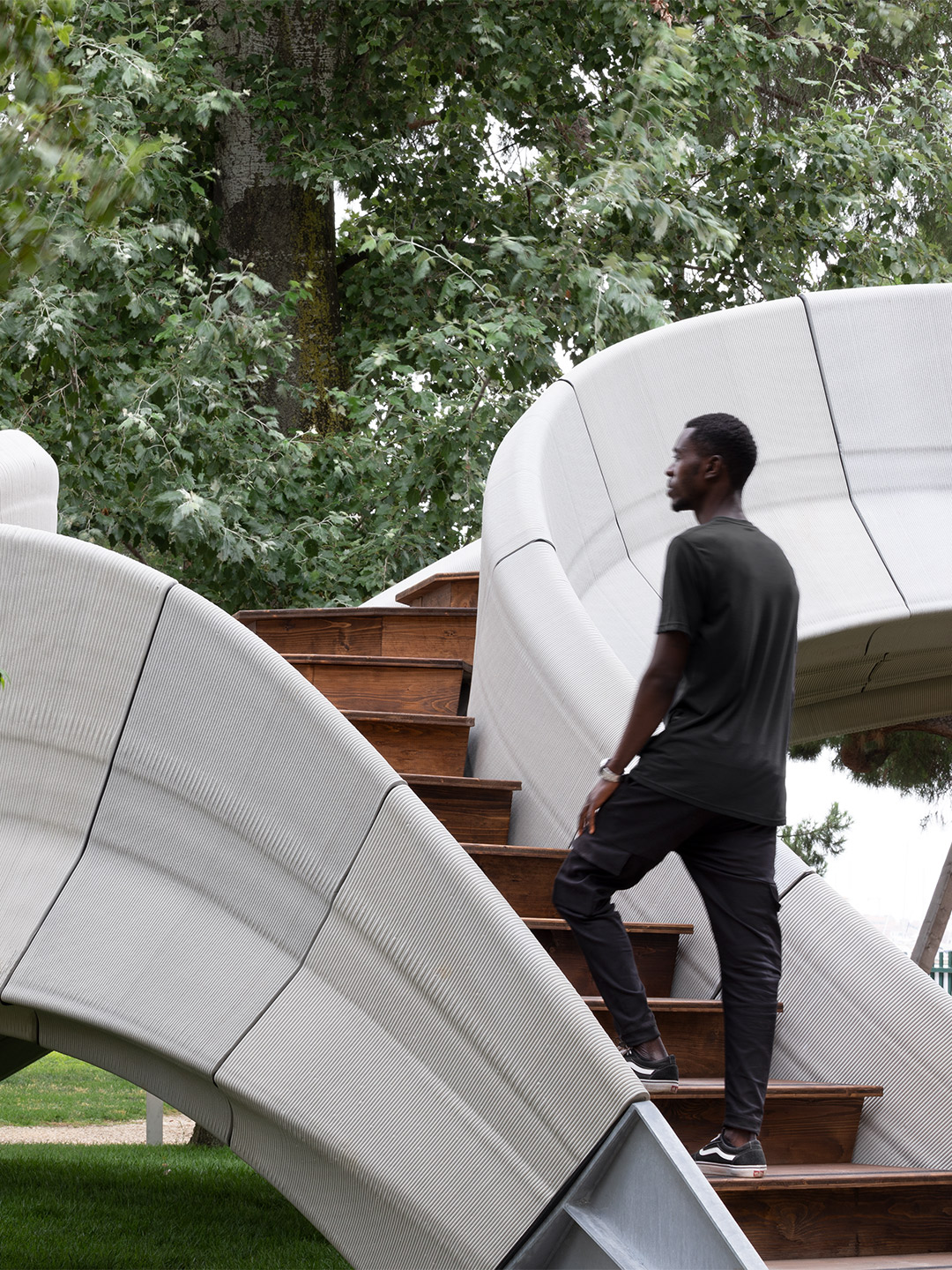
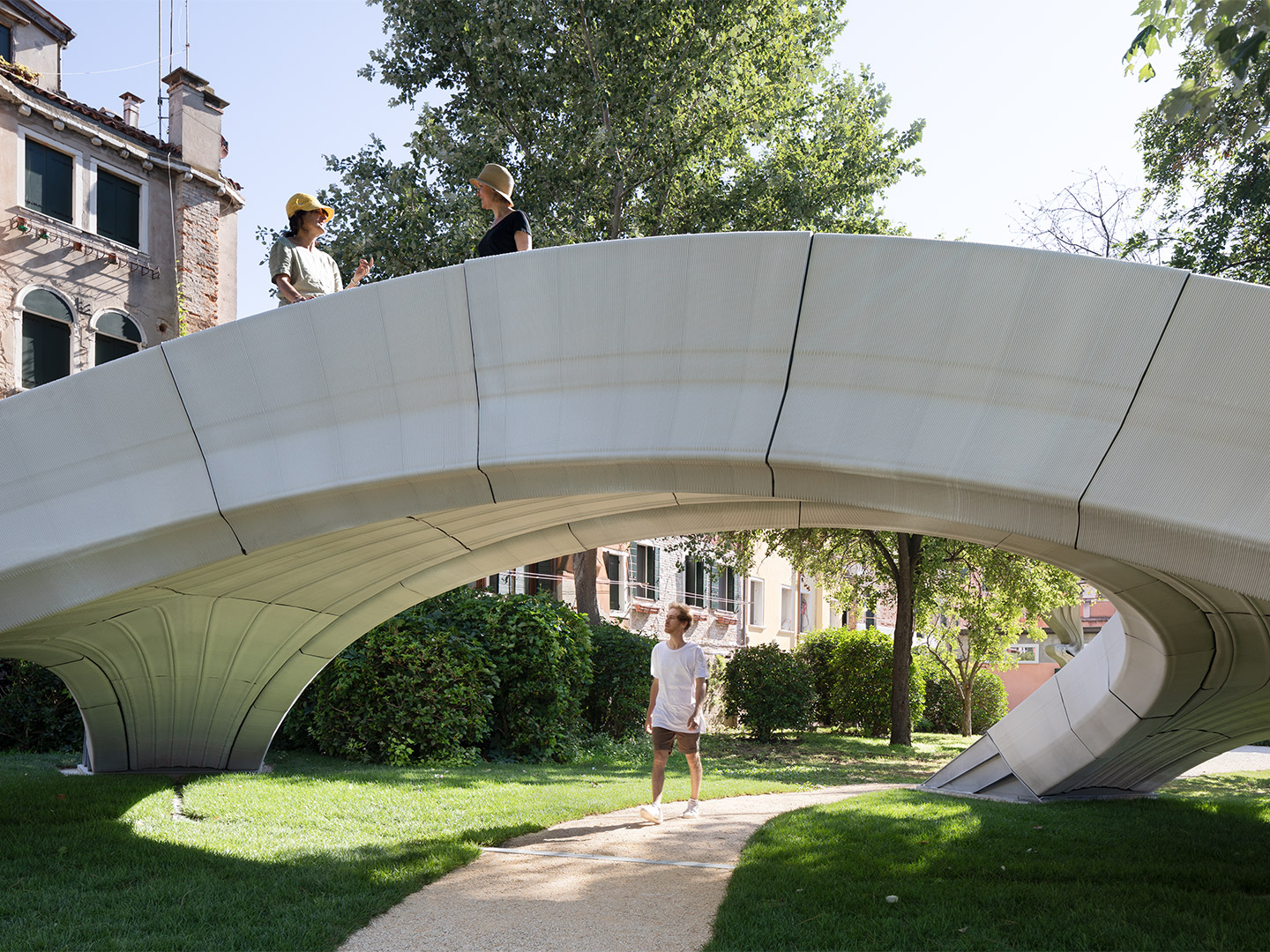
It was designed by some of the best architectural and creative minds in their fields and demonstrates the infinite possibilities of 3D concrete printing in enabling more sustainable, faster and effective building structures, without compromise on aesthetics and functionality. “Its digital and circular design uses concrete at its best, with minimal material use and blocks that can be repeatedly reassembled and infinitely recycled,” adds Jan Jenisch, CEO of Holcim.
Holcim is working on a range of 3D Concrete Printing applications, from complex infrastructure to affordable housing. In Malawi, the company launched the world’s-first 3D concrete printed school, taking only 18 hours to build the walls and using 70% less materials than traditional building techniques.
The organisation is also working with GE Renewable Energy and COBOD to 3D concrete-print taller wind turbine towers on-site, doubling their height to harness stronger winds and capture 33% more renewable electricity at lower cost.
“Holcim continues to push the boundaries of innovation and sustainability around the world – and locally in Australia and New Zealand,” says George Agriogiannis, CEO of Holcim Australia and New Zealand. “In April we launched ECOPact concrete in Australia to offer architects and builders options to reduce embodied carbon by 30 to 60%. [The] opening of Striatus pushes the frontier again to show what is possible with smart collaboration and design ingenuity.”
[The] opening of Striatus pushes the frontier again to show what is possible with smart collaboration and design ingenuity.

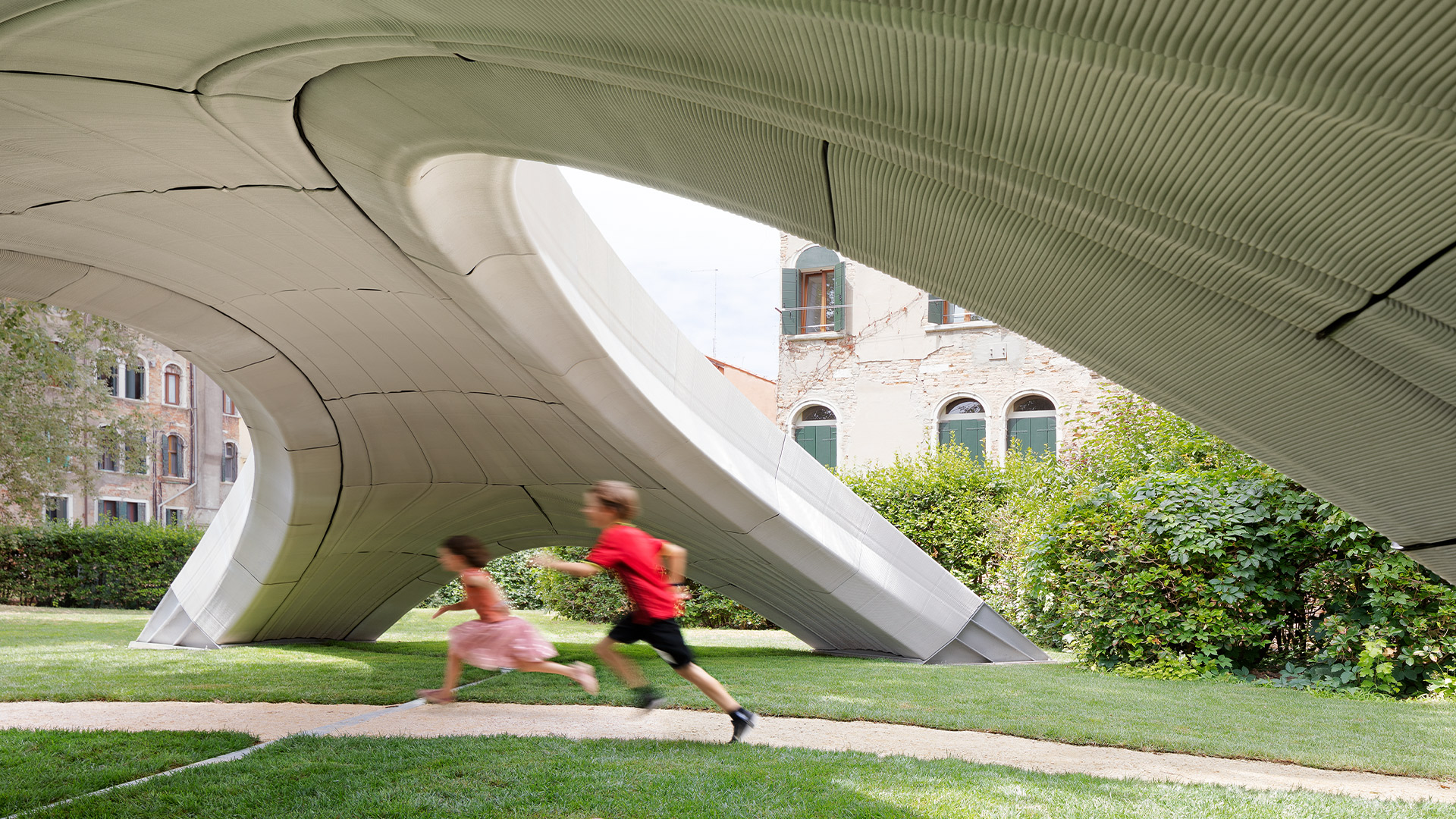
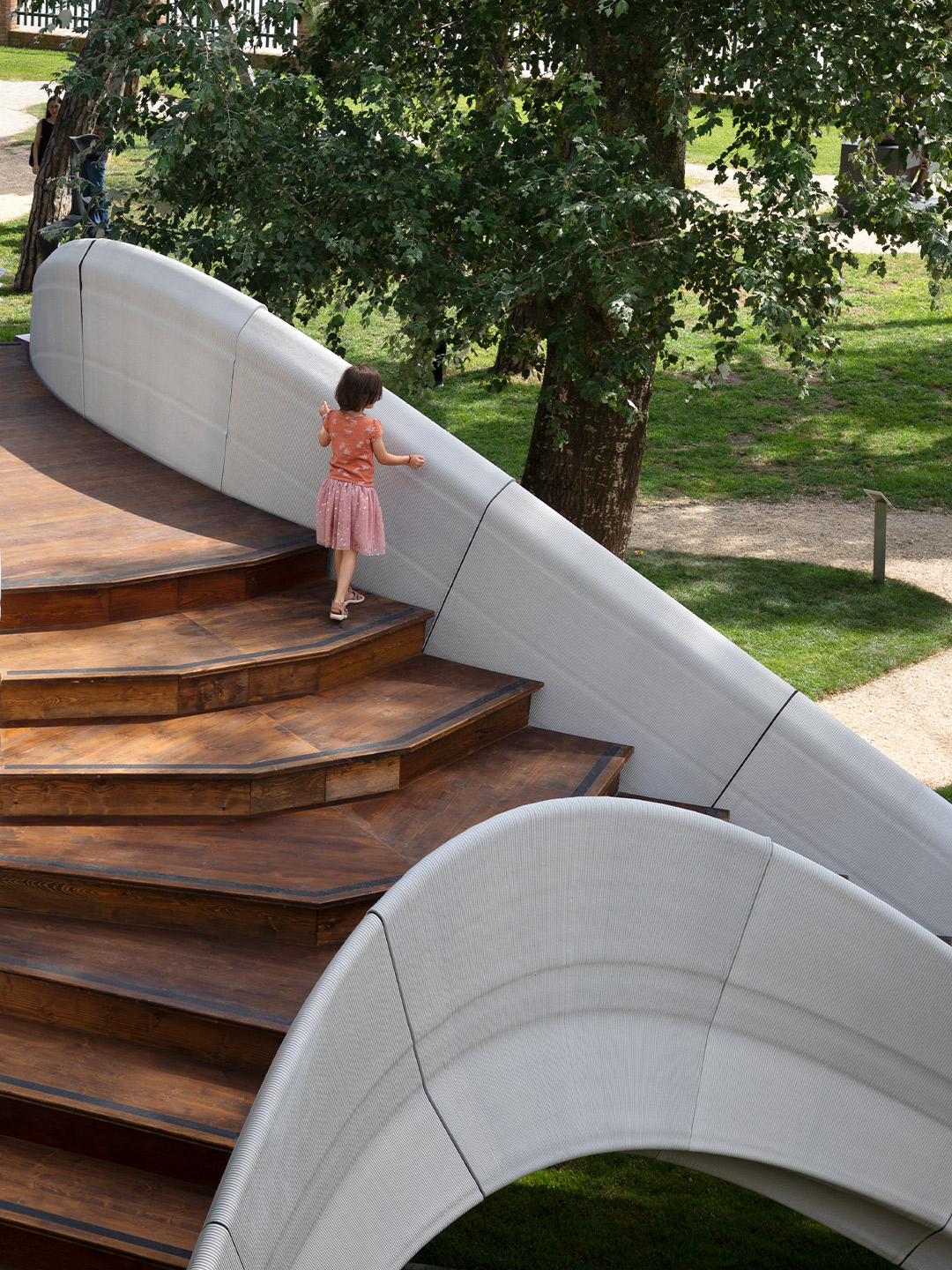
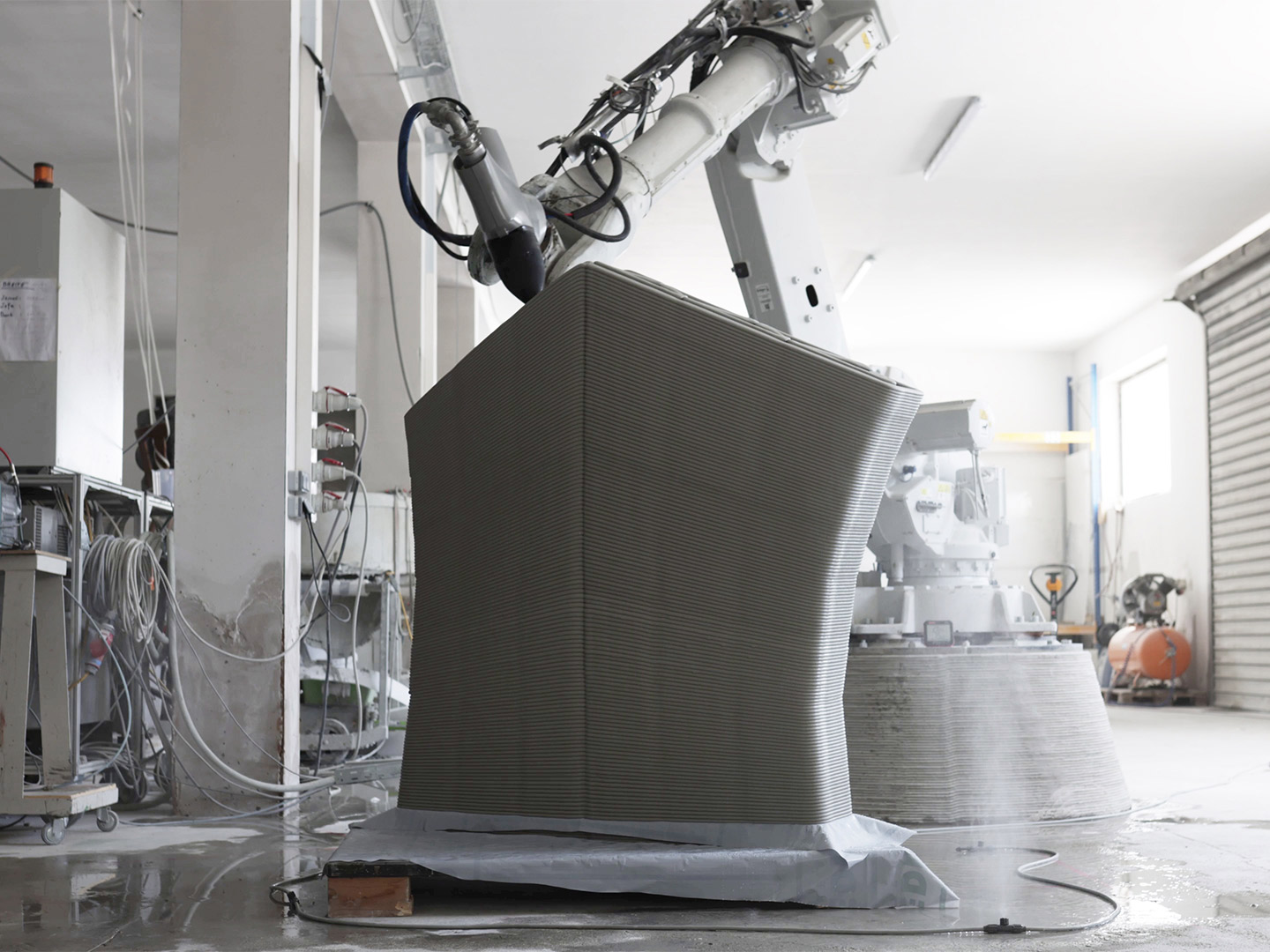
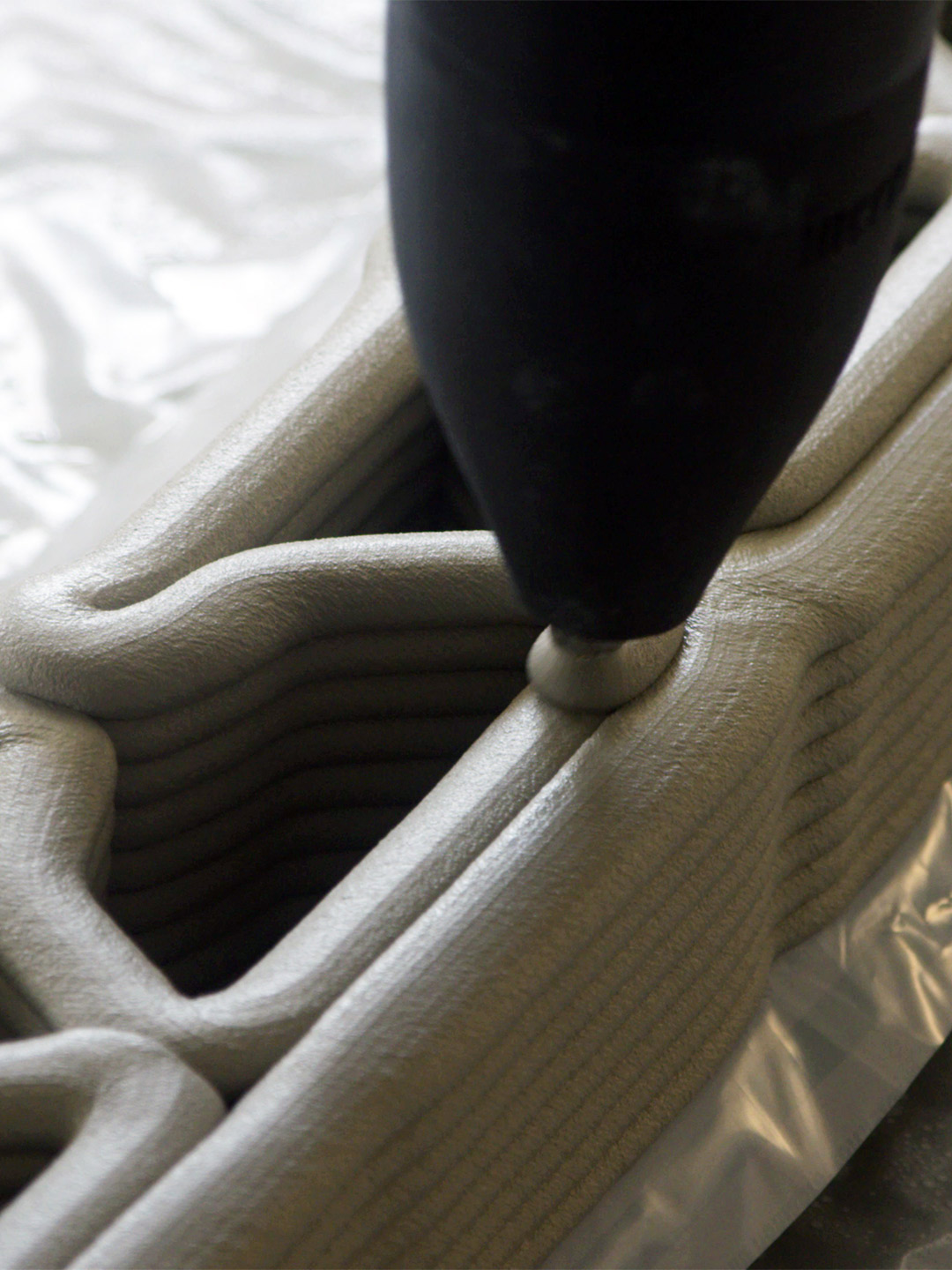
Catch up on more architecture, art and design highlights. Plus, subscribe to receive the Daily Architecture News e-letter direct to your inbox.
Related stories
- ‘The Apple tree’ by Foster + Partners blossoms in Bangkok.
- Carla Sozzani curates new colours for classic Arne Jacobsen chairs.
- Adam Goodrum stamps all-Australian style on new breezeblock design.
Designed by Zaha Hadid Architects and Block Research Group, in collaboration with incremental3D and Holcim, a “first of its kind” 3D-concrete-printed bridge has opened to the public in Venice. The unveiling is aligned with the city’s Biennale of Architecture that runs through until November. Titled Striatus, the footbridge is said to establish a new language for concrete that is digital, environmentally advanced and circular by design. It’s held together through compression – with no reinforcements – applying computational design and 3D printing for minimal material use and maximum strength.
Already linked by their shared passion for revitalising contemporary glass, the two institutions have now come together during the Venice Biennale of Architecture to showcase modern glass art and design by way of a glittering exhibition. Titled ‘Glass to Glass’, the presentation is the ultimate celebration of the skilled artists and designers working with Murano glass today.
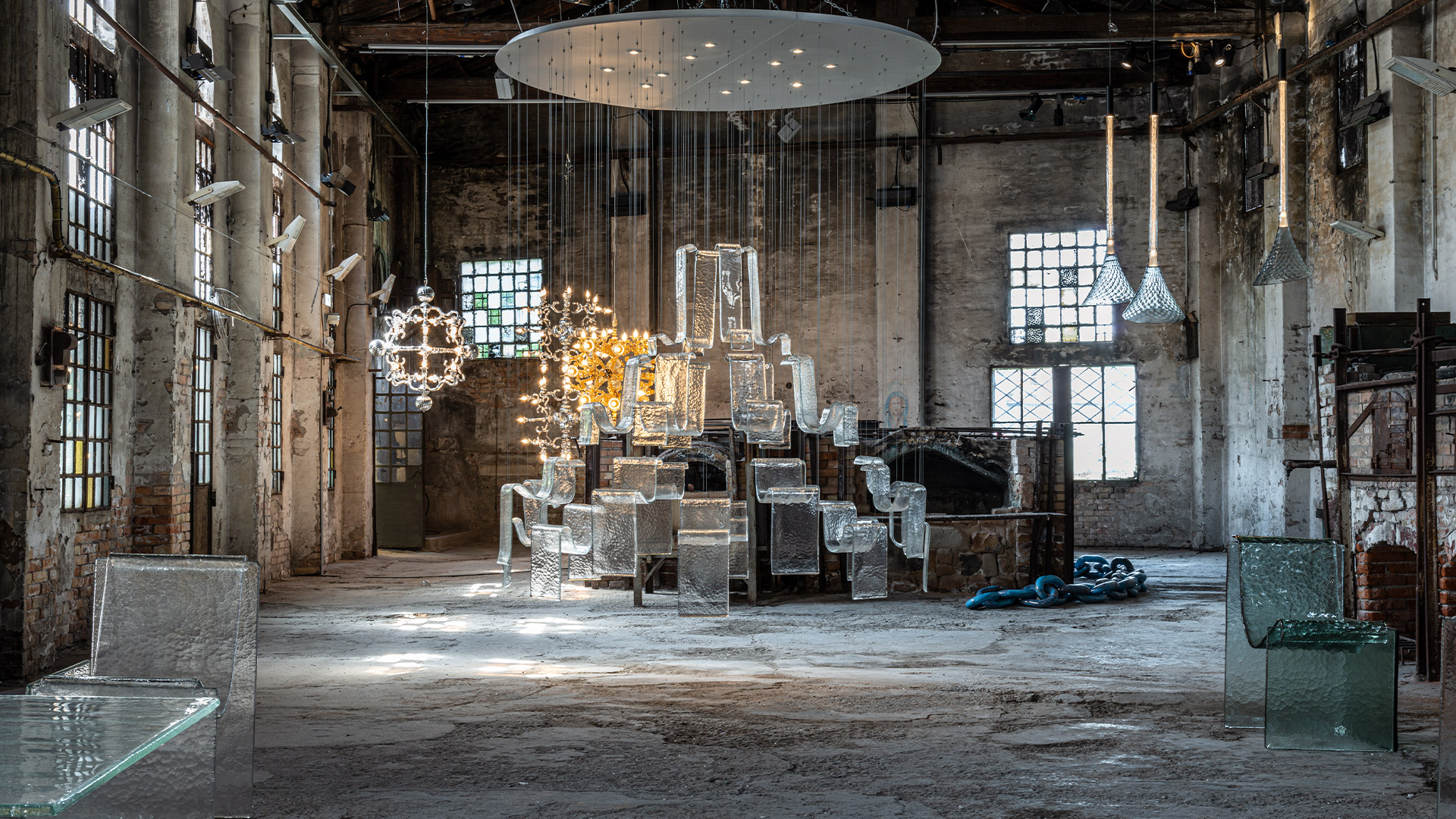

‘Glass to Glass’ exhibition in Venice and Murano
“A collaboration with Berengo Studio was a natural fit for us as we share the same passion and respect for glass and both strive to showcase the endless possibilities that this medium has to offer,” Maurizio says. “These past twelve months have been particularly challenging for the Venetian glass industry and we wanted to create a platform to foster new creativity.”
A selection of works conceived by internationally acclaimed designers and artists produced in collaboration with the glass artisans of Murano is now on show at the Fondazione Berengo Art Space in Murano. As well as at the 18th-century Farmacia near San Marco, one of the oldest standing pharmacies in Venice and home of the Berengo Collection.
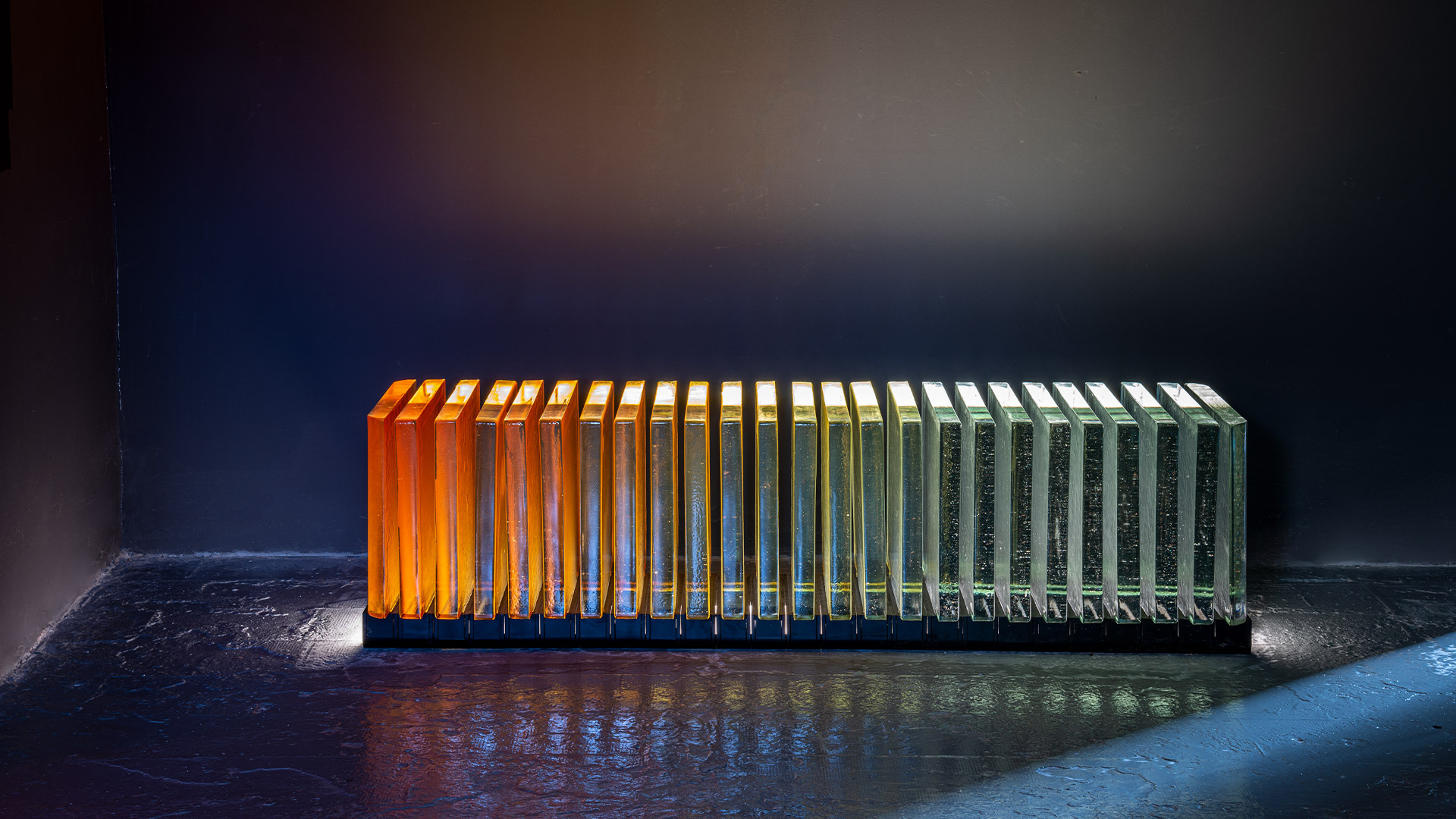
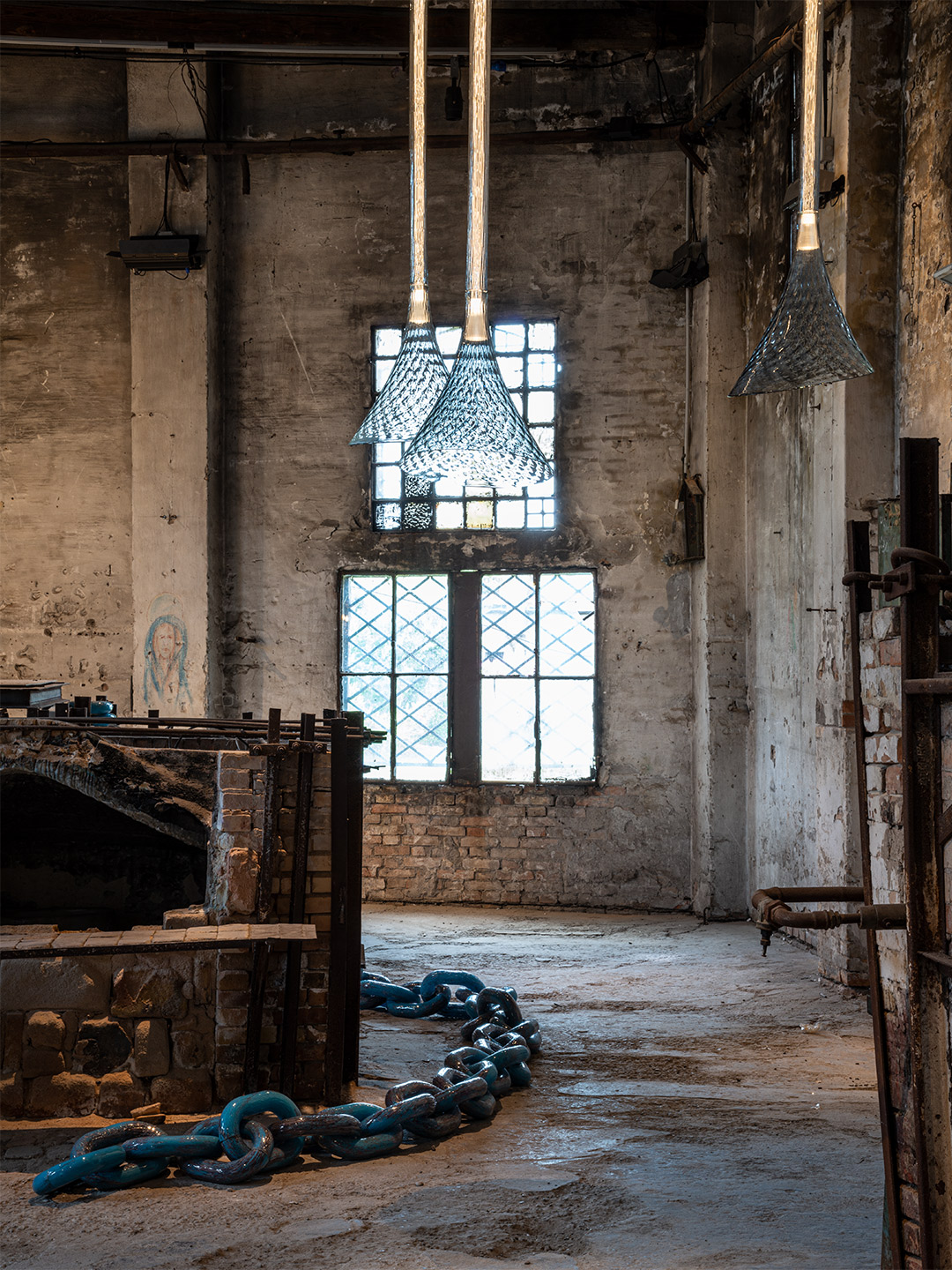
Visitors to the two-part exhibition will discover a selection of pieces from the collections of both WonderGlass and Berengo Studio, shown alongside new and revisited pieces – some specifically commissioned for ‘Glass to Glass’ from artists such as nendo, Maarten Baas, John Pawson and Sam Baron.
As Berengo Studio and WonderGlass come together for this exhibition they beautifully combine their expertise and creativity as two leading visionaries in the world of glass, giving new energy to an ancient material and consolidating the position of Venice as a leader in the field of glass manufacturing.
‘Glass to Glass’ is on show until November 21.
Fondazione Berengo Art Space, Campiello della Pescheria 4, Murano. Open daily from 10am to 5pm.
Berengo Collection, Calle Larga San Marco 412-413, Venezia. Open daily from 10am to 5pm; 8pm to 10pm (closed Wednesdays).

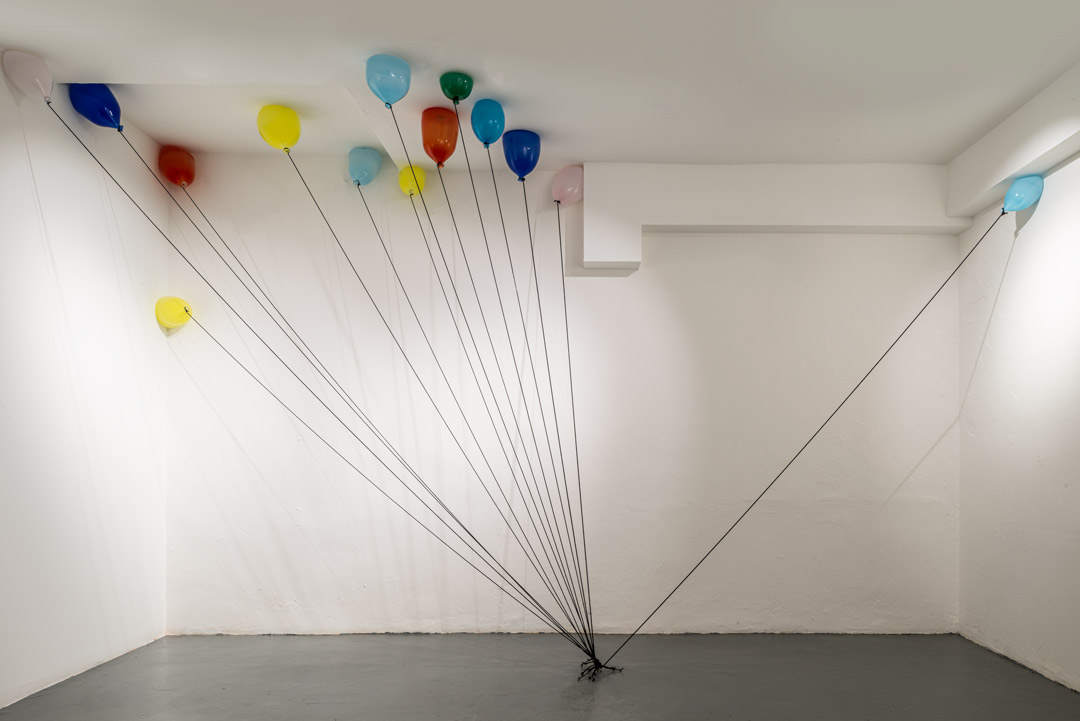
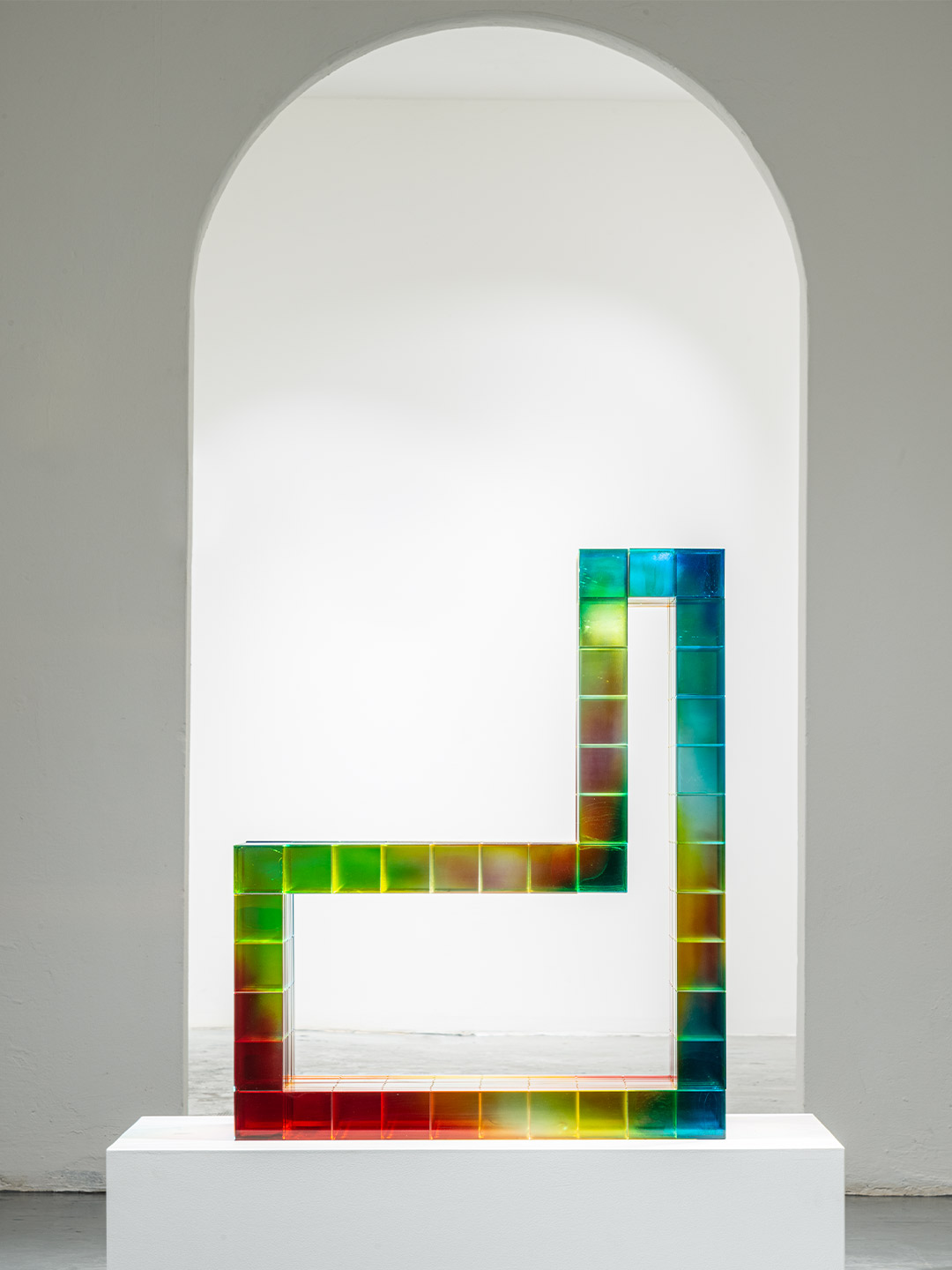
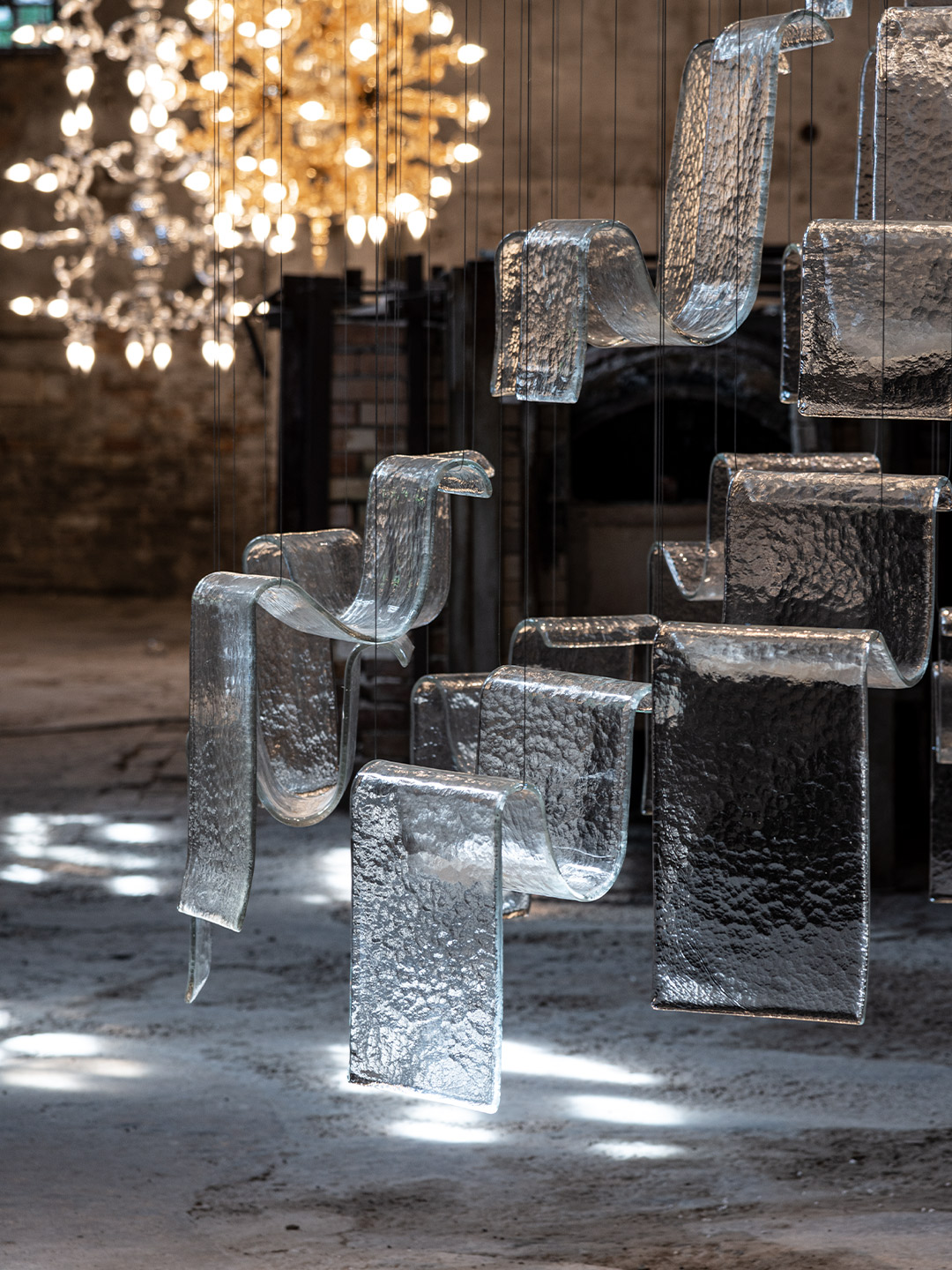


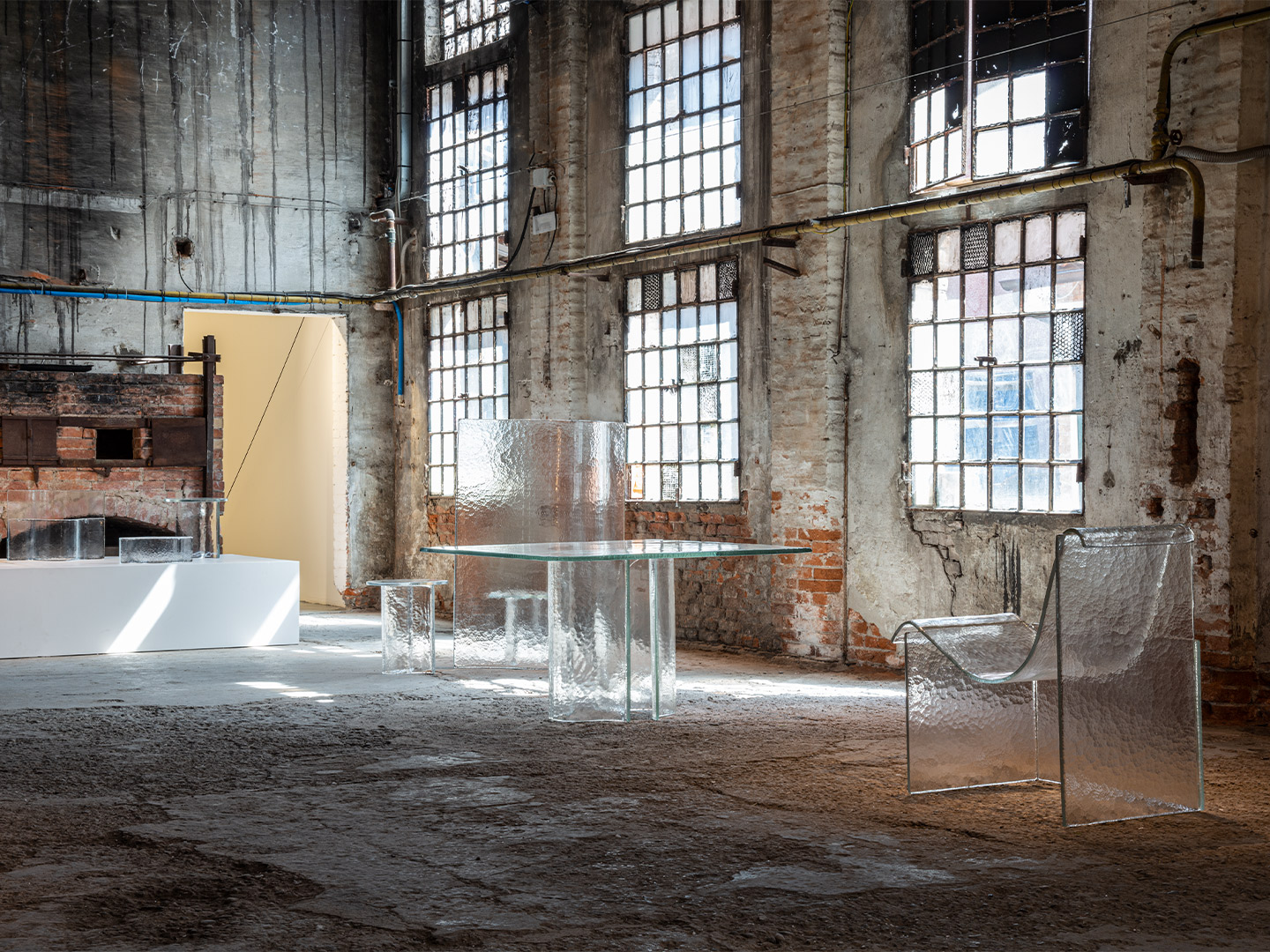
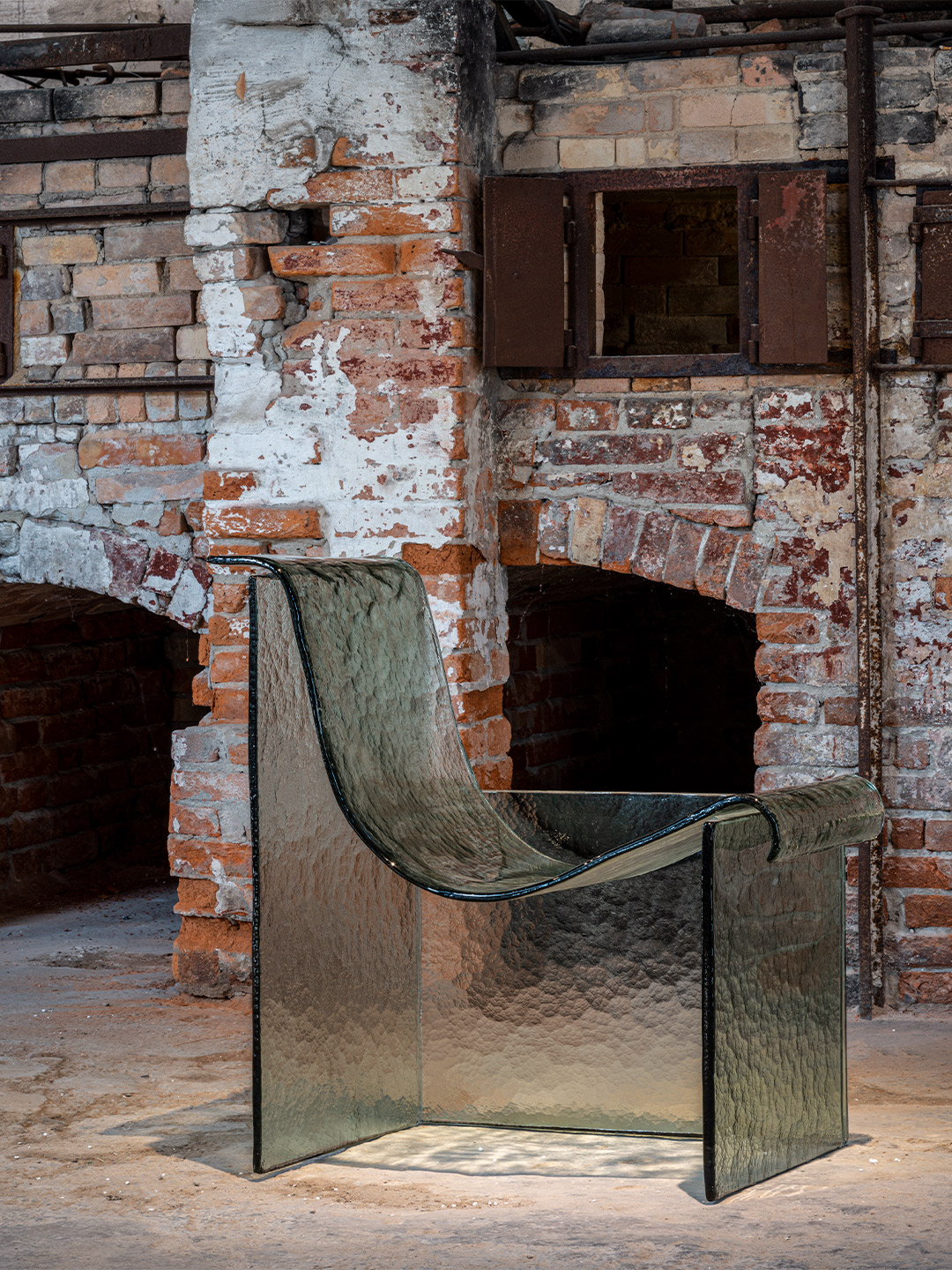

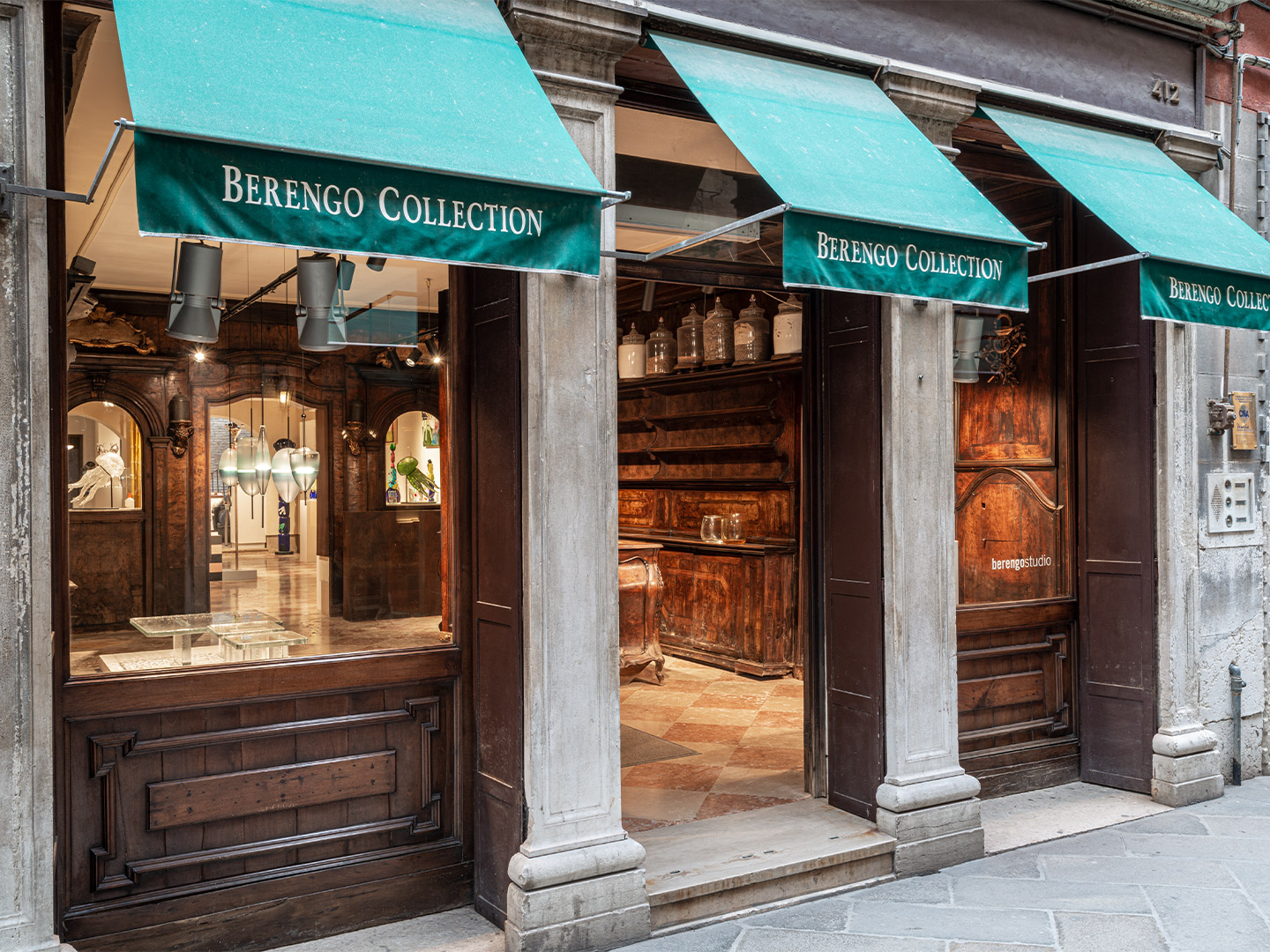

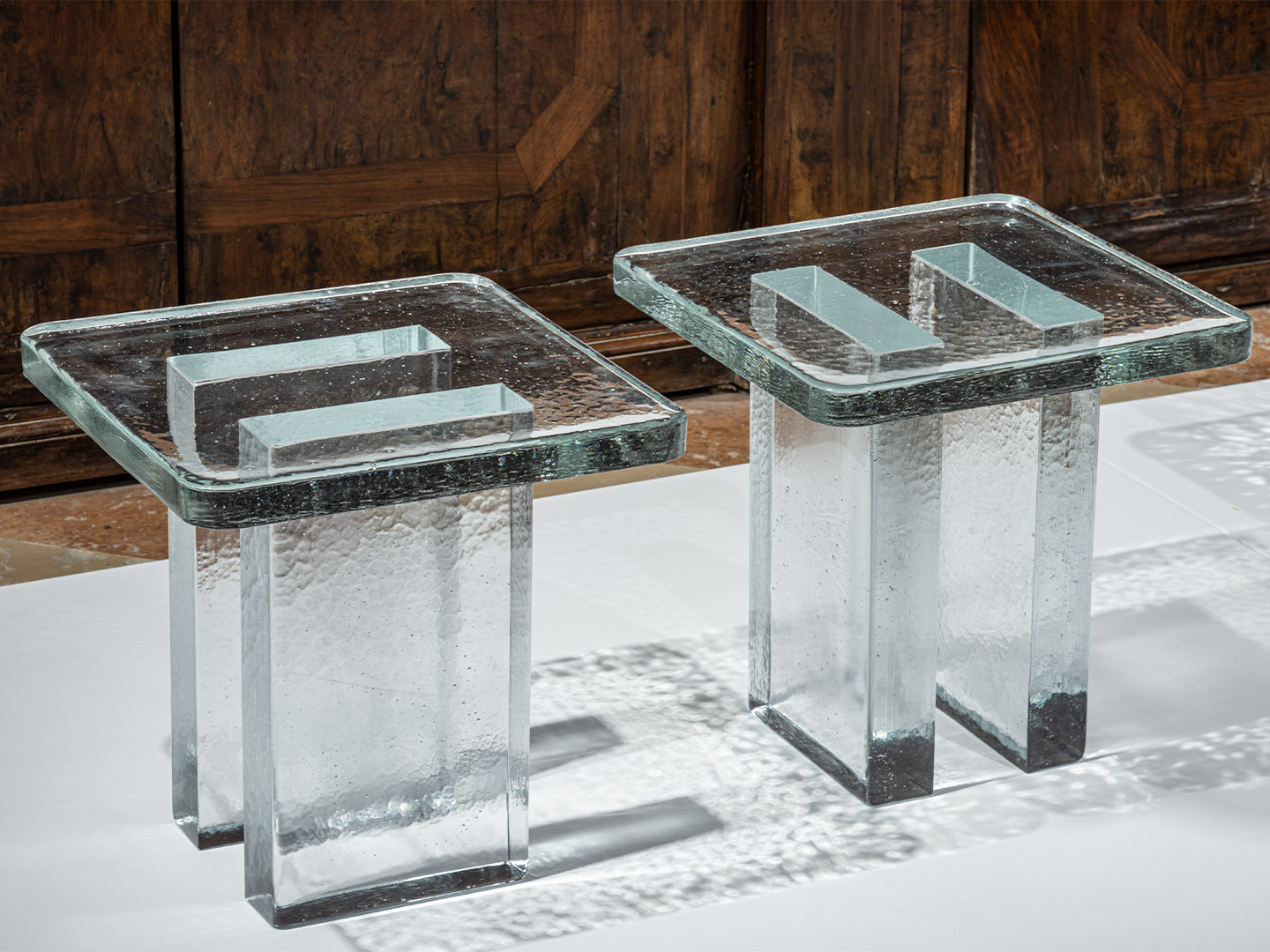
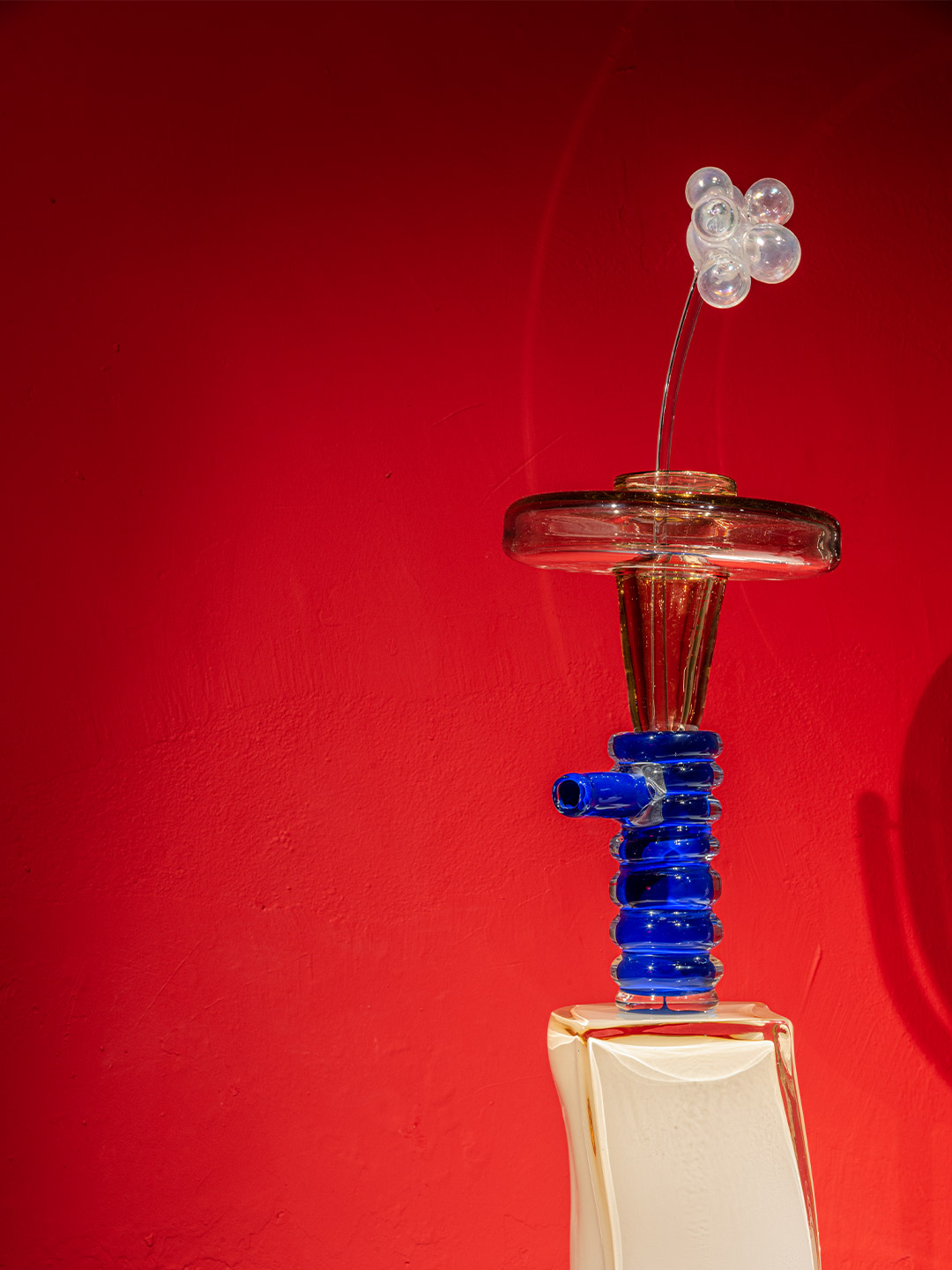
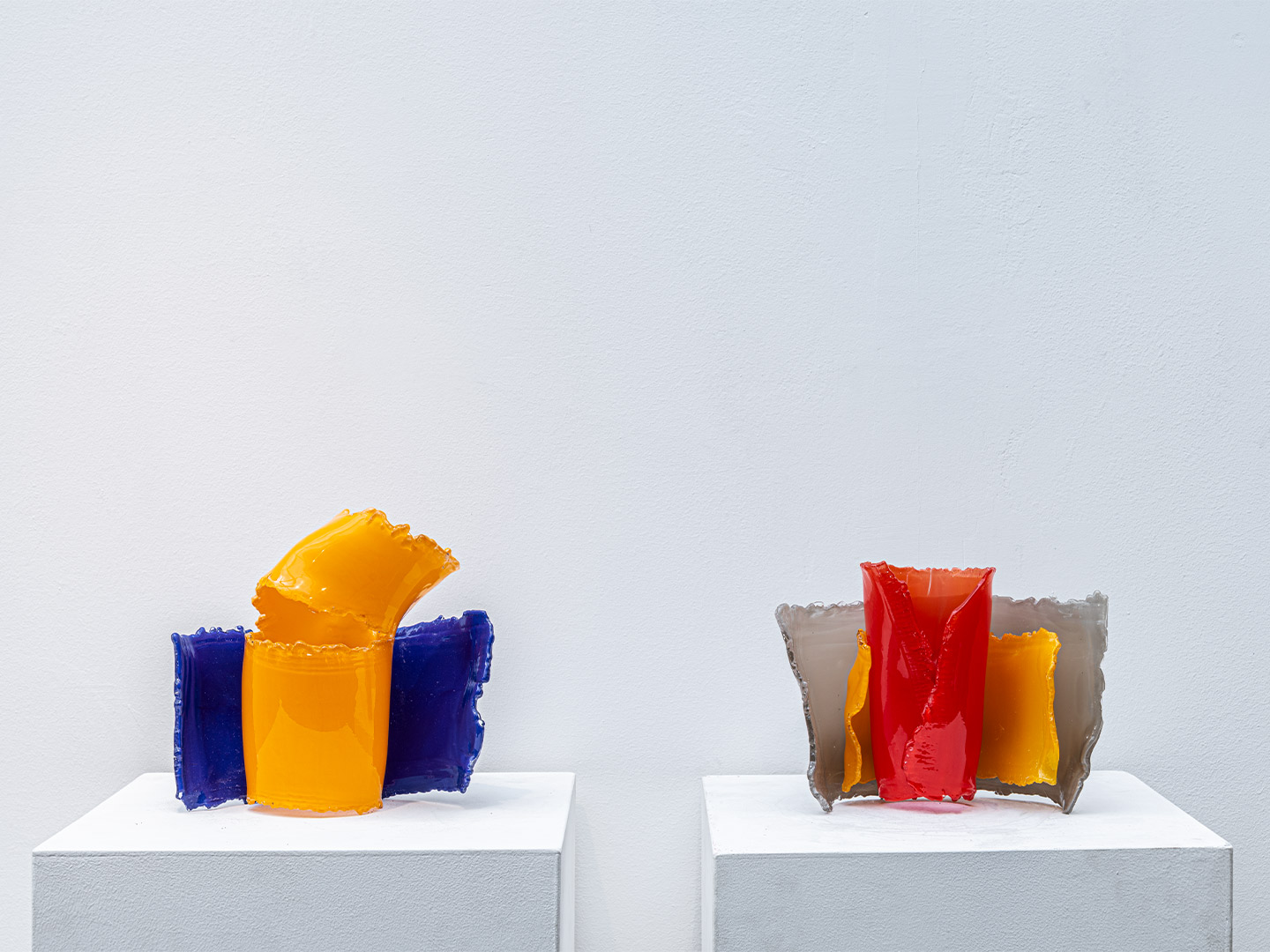
A collaboration with Berengo Studio was a natural fit for us as we share the same passion and respect for glass and both strive to showcase the endless possibilities that this medium has to offer.
Catch up on more architecture, art and design highlights. Plus, subscribe to receive the Daily Architecture News e-letter direct to your inbox.